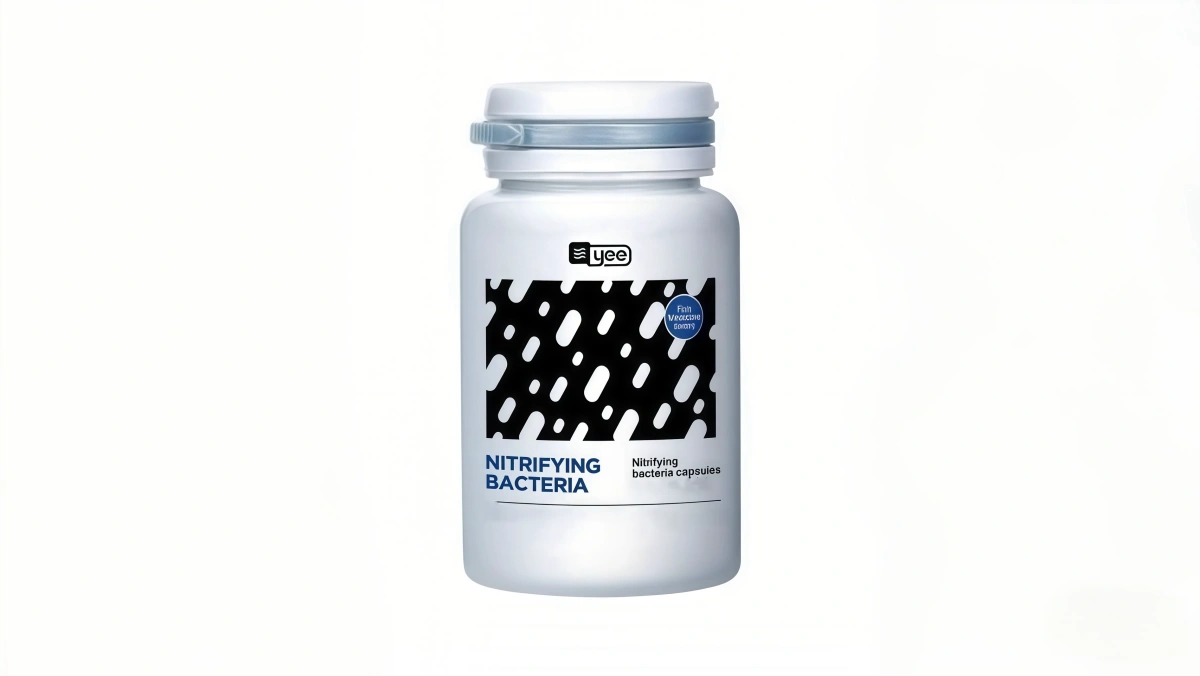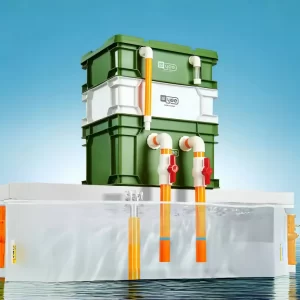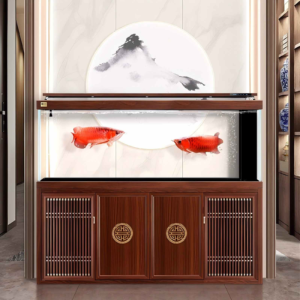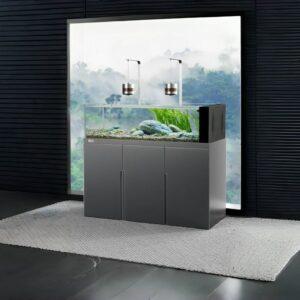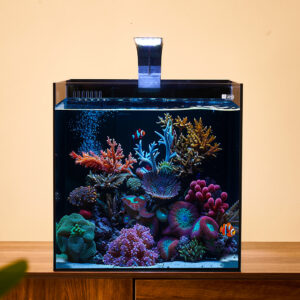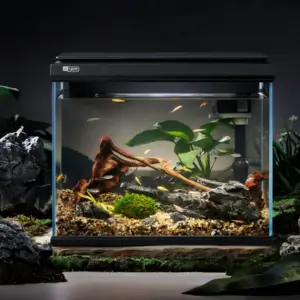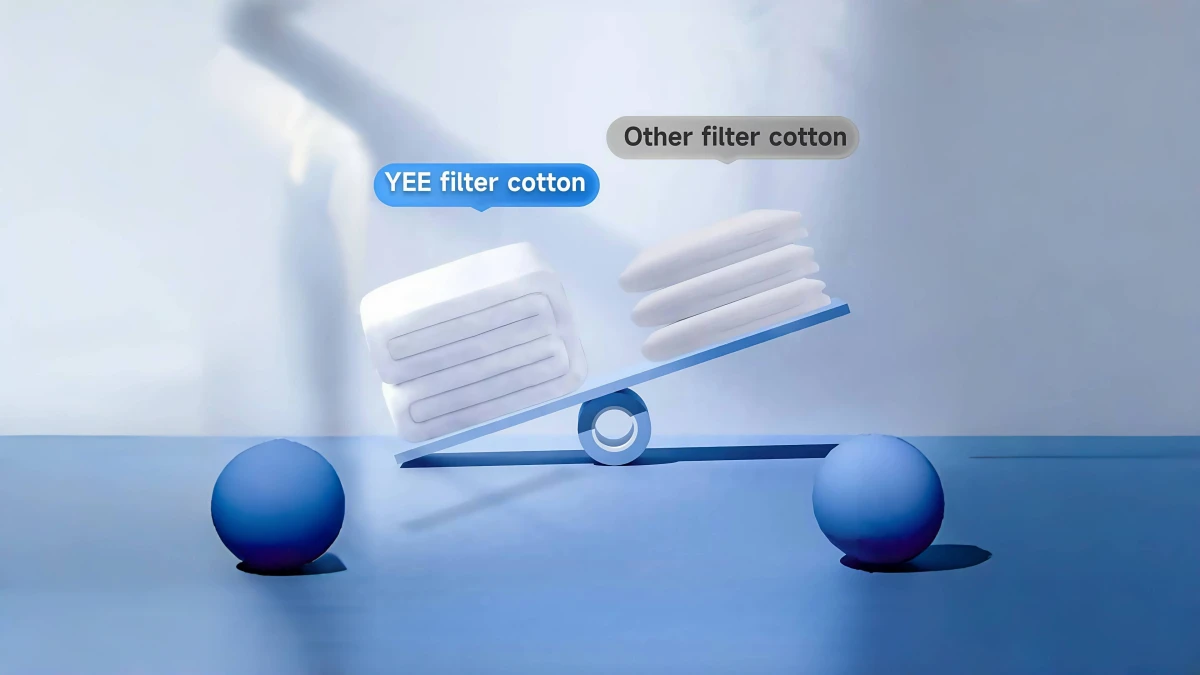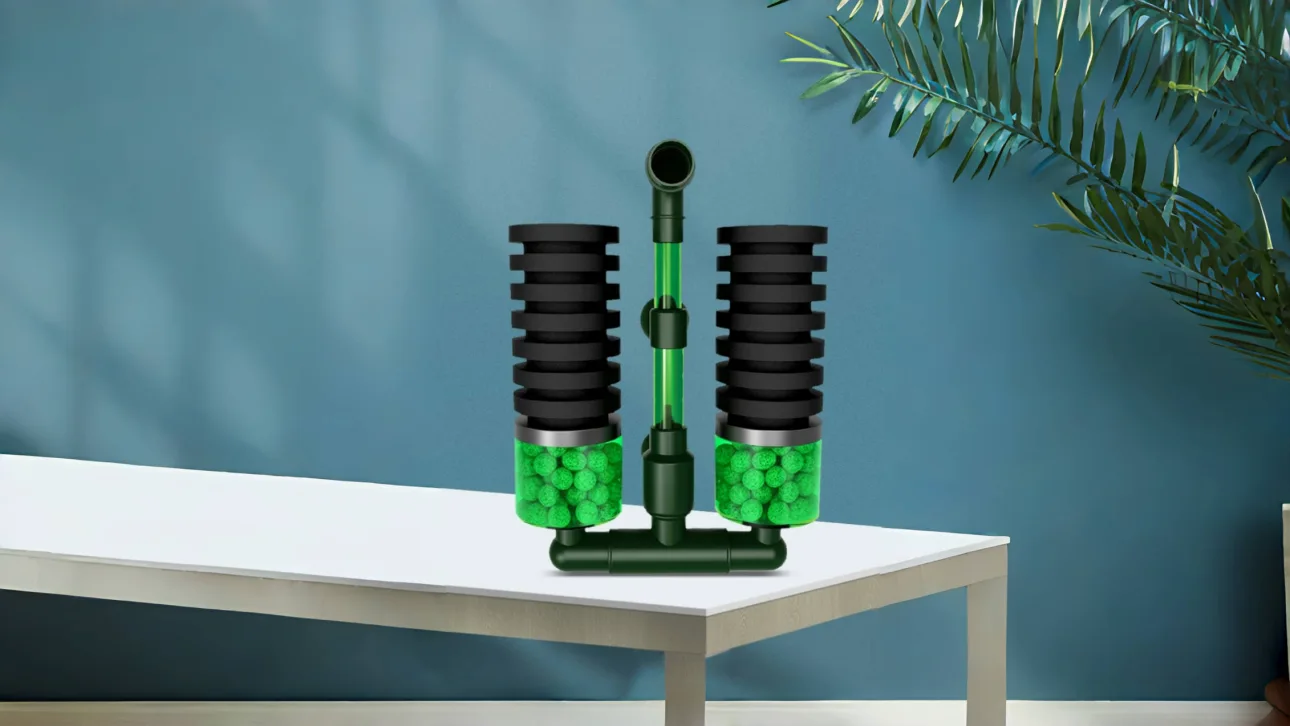In the fish tank filtration system, nitrifying bacteria plays a vital but often overlooked role. These tiny organisms, like unsung heroes hidden behind the scenes, silently bear the responsibility of maintaining the ecological balance of the aquarium. This article will introduce the composition, function, growth and reproduction of nitrifying bacteria and provide some purchase suggestions.
The mystery of nitrifying bacteria
1.Classification and composition
They have different shapes, including spherical, rod-shaped, spiral, etc., all of which are non-spore Gram-negative bacteria. Some have flagella and can move, while others are flagella-free and motionless.
In the aquarium environment, nitrifying bacteria exist in the form of bacterial colonies and prefer to attach to the microporous surfaces of filter materials such as biochemical cotton, biochemical balls, glass rings, and ceramic rings.
Nitrite bacteria, known as “oxidizers of ammonia”, feed on ammonia, obtain energy by oxidizing ammonia, and convert ammonia into nitrite.
Nitrate bacteria are “nitrite oxidizers”. They use nitrite as their main food source and further oxidize nitrite into nitric acid, thus completing the transformation journey of harmful substances in the aquarium.
| Genus | Phylogenetic group | DNA (mol% GC) | Habitats | Characteristics |
|---|---|---|---|---|
| Nitrosomonas | Beta | 45-53 | Soil, sewage, freshwater, marine | Gram-negative short to long rods, motile (polar flagella) or nonmotile; peripheral membrane systems |
| Nitrobacter | Alpha | 59-62 | Soil, freshwater, marine | Short rods, reproduce by budding, occasionally motile (single subterminal flagella) or non-motile; membrane system arranged as a polar cap |
Key role – why do we need nitrifying bacteria
After the excrement and leftover food of fish are decomposed by heterotrophic bacteria, toxic ammonia nitrogen and nitrite will be produced. At this time, nitrifying bacteria come forward.
● Nitrite bacteria take the lead in oxidizing ammonia into nitrite.
● Nitrate bacteria take over and convert nitrite into nitric acid.
This greatly reduces the toxicity of these substances to fish. Keep the concentration of ammonia nitrogen and nitrite in the water within a safe range. Ensure the living environment of fish.
It is worth noting that although nitrate is relatively non-toxic, excessive concentration still needs to be diluted by water changes to maintain long-term stability of water quality.
Unique growth characteristics of nitrifying bacteria
1.Reproduction and growth
Compared with heterotrophic bacteria, nitrifying bacteria reproduce more slowly. It takes about 26 hours for nitrite bacteria to double, and about 60 hours for nitrate bacteria. Under ideal conditions, heterotrophic bacteria can double in just 20 minutes.
This characteristic puts nitrifying bacteria in a weak position in the early stages of aquarium construction. If not added artificially, they rely entirely on their own development. The organisms in the aquarium may die due to deterioration of water quality. Therefore, timely addition of nitrifying bacteria helps to quickly establish a dominant bacterial community and stabilize water quality. Buy filter materials at wholesale prices – yee.
2.Environment preferred by nitrifying bacteria
● Acid-base balance: Nitrifying bacteria prefer alkaline environments. When the pH value is 7.8, the activity is higher. 7.0 is moderate, and survival and function will be seriously affected when it is lower than 6. However, considering that aquatic plants prefer a weakly acidic environment. The pH value in the aquarium is usually controlled at 6.8 – 7.2 to take into account the needs of all parties.
● Temperature sensitivity: Nitrifying bacteria adapt to a temperature range of 41°F to 107.6°F, and are active at a temperature range of 75.2°F – 78.8°F. Temperatures that are too low or too high will inhibit their activity and even cause mass death. When commissioning high-ammonia wastewater projects or managing aquariums in winter, special attention should be paid to the impact of temperature and appropriate insulation or strain selection measures should be taken.
● Oxygen dependence: As aerobic bacteria, nitrifying bacteria have high requirements for dissolved oxygen. Dissolved oxygen is directly related to their survival and nitrification. If there is not enough oxygen in the fish tank filtration system. Not only will the growth of nitrifying bacteria be hindered, but algae may also grow. Therefore, oxygenation equipment such as air pumps are indispensable in aquarium farming. To ensure that the water body has sufficient dissolved oxygen to meet the survival needs of nitrifying bacteria. Purchase oxygen pumps at factory wholesale prices.
● Survival in the dark: Nitrifying bacteria are sensitive to light, especially ultraviolet rays. They often hide in lightless or weak light areas such as filter barrels and bottom beds. Strong light may destroy its cell structure and cause death. It may also cause algae to grow and block the living space of nitrifying bacteria. Affect water quality.
Nitrifying bacteria selection guide
1.Liquid VS dry powder
There are fish in the fish tank. When the water quality is abnormal and emergency treatment is needed, use liquid nitrifying bacteria. Liquid nitrifying bacteria are live bacteria and are colorless or light yellow liquid. It has high activity and takes effect quickly. It has obvious advantages when opening a new tank or emergency treatment of water quality, but the shelf life is short, about 8 months.
When there are no fish in the fish tank, dry powder nitrifying bacteria are more suitable. Dry powder nitrifying bacteria are dormant bacteria and need to be activated. The activation period is about one to two days, and it is not suitable to change water or operate during this period. However, after activation, the content of dry powder nitrifying bacteria is high, the bacterial culture effect is good, and the shelf life is long.
For daily maintenance, both are acceptable. In terms of price, dry powder nitrifying bacteria are cost-effective. Liquid nitrifying bacteria vary by brand. When purchasing, you should weigh the pros and cons according to the actual situation and choose the product that best suits your aquarium.
2.Identify true and false nitrifying bacteria
It is very important to distinguish true and false nitrifying bacteria to avoid damaging the aquarium ecology. First, judging from the smell, true nitrifying bacteria are odorless or slightly fishy. If there is a bad smell, it may contain hydrogen sulfide, indicating that the product is not good.
Secondly, from the color state. The nitrifying bacteria are light yellow. The preparation should be white or light yellow. Black may be that the nitrifying bacteria are dead or contain harmful impurities.
In addition, pay attention to whether the product distinguishes between freshwater and seawater. Real nitrifying bacteria have different living environments. Freshwater and seawater types cannot be mixed. The quality of the product can also be judged by testing the ammonia nitrogen content in the aquarium. Or observe the biological reaction after adding bacteria when changing water or opening the tank to assist in judgment.
Of course, if you still don’t know how to distinguish the true from the false. It is recommended to buy products from big brands, which will have better after-sales service. It is not enough to smash your own brand. Which brands are more reliable? Of course, it is our Yee-a professional aquarium supplies wholesale supplier.
Tips for using nitrifying bacteria
1.Timing of adding nitrifying bacteria
In the early stage of establishing the fish tank filtration system, there are few bacteria in the aquarium. Adding at this time will help to quickly establish the nitrification system and reduce the harm of harmful substances to the fish. You can also add it appropriately after changing more than one-third of the water or cleaning the filter cotton. To maintain the balance of the bacterial flora and stable water quality. But if the water quality is stable and the nitrification system is mature. There is no need to add it blindly to avoid waste of resources and potential water quality problems.
2.Choose fish tank accessories carefully to avoid killing nitrifying bacteria
● Avoid using fungicides: Nitrifying bacteria and fungicides and disinfectants cannot be used at the same time, because fungicides will indiscriminately kill all bacteria including nitrifying bacteria. After using fungicides, wait at least one week. Add nitrifying bacteria after the effect of the drug has subsided to ensure that the new bacteria can survive and play a role.
● Be cautious when pairing bacteria: Be cautious when pairing with other water purification bacteria such as photosynthetic bacteria. Nitrifying bacteria are aerobic, while photosynthetic bacteria are anaerobic and require light. The two have different mechanisms of action and environmental requirements. Stocking them at the same time may compete for resources and inhibit each other. Affect the water purification effect. Therefore, before using them together, you need to fully understand their characteristics and needs to avoid counterproductive effects due to improper matching.
● Principle of appropriate amount
Adding nitrifying bacteria is not the more the better. Excessive addition will cause bacteria to multiply in a short period of time and consume too much oxygen. The dissolved oxygen content in the water body will drop sharply, endangering the survival of other organisms.
In addition, excess nitrifying bacteria may die due to lack of sufficient “food” and become a new source of pollution. The usage of different products varies. Generally speaking, super concentrated nitrifying bacteria are used for about 70 liters of water per 10 ml per week. The dosage can be appropriately increased in the first two weeks of setting up a new fish tank filtration system, and it needs to be doubled accordingly when adding a large number of new fish.
In short, be sure to follow the product instructions when using it, and combine the actual situation of the aquarium to accurately control the usage. Ensure that nitrifying bacteria perform at their best in the aquarium. Create a clean and healthy living home for fish.
Brand recommendation
If you don’t know which brands are more reliable. Why not try our yee nitrifying bacteria. And we also provide professional wholesale services for fish tanks, water pumps, filters, and fish tank lights.You can check out more quality large fish tanks and filters here.

